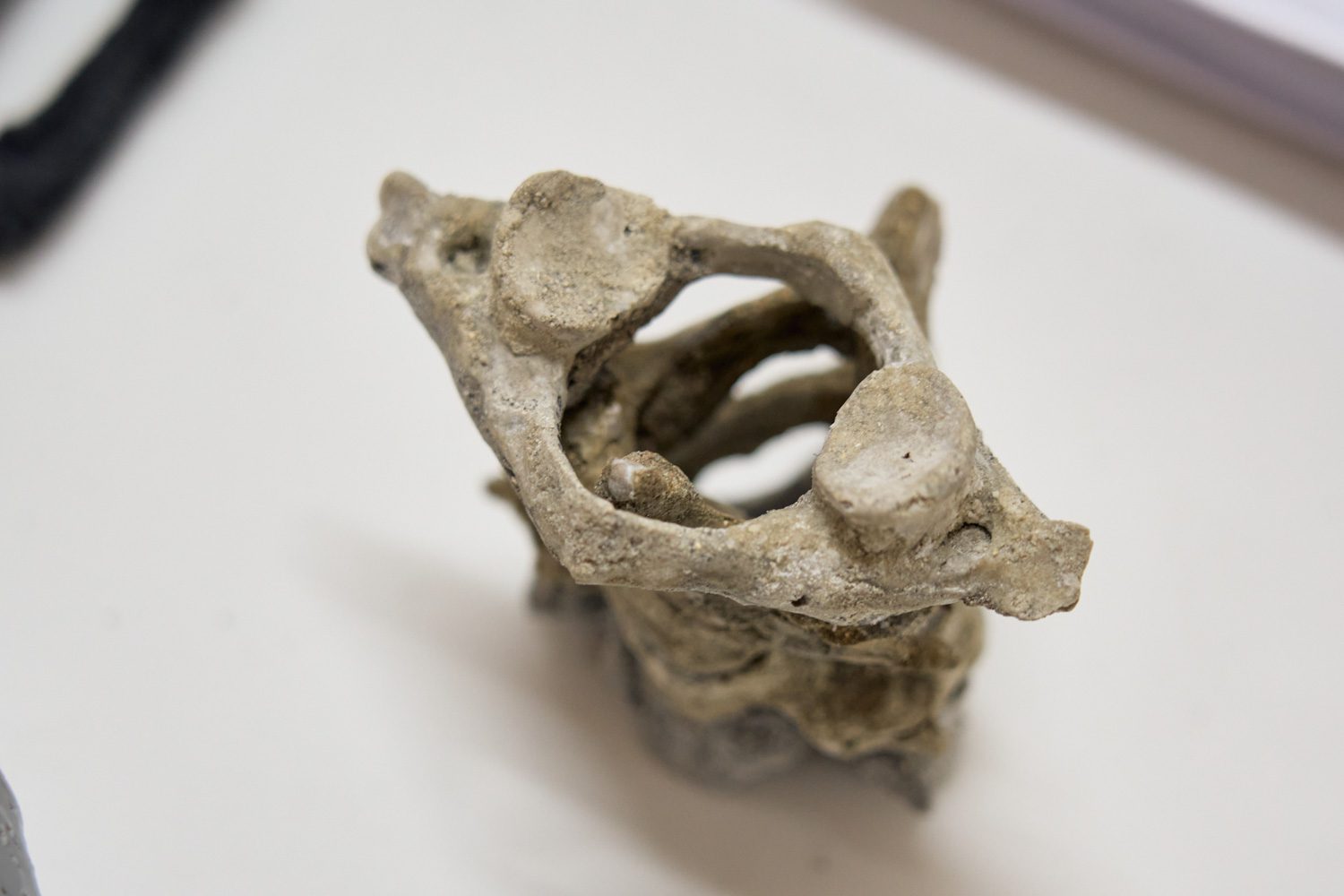IN GOLEM 2022 – UNCANNY EXHIBITION, RUANGSAK ANUWATWIMON CREATES A HUMAN-LIKE PERFECT CREATURE FROM OTHER LIVING SPECIES SPECIMENS, POINTING OUT THE PRICE OTHER LIVING SPECIES HAVE TO PAY FOR HUMAN ENDLESS DESIRES
TEXT: PRAPAN JANGKITCHAI
PHOTO COURTESY OF GALLERY VER
(For Thai, press here)
Held at Gallery VER during 23 April – 19 June 2022, GOLEM 2022 – Uncanny, the solo exhibition by Ruangsak Anuwatwimon is a part of the GOLEM, a long term art project initiated back in 2011, and is a sequel of Embodying the Monster which is held at SAC Gallery.
For his latest solo show, the artist reinterpreted Golem, a myth about a living creature brought to life by magical spells. In Jewish folklore, Golem lives to serve the person who brings it to life. Ruangsak creates Golem or a simulated human with a tall and large body that puts together all the distinctive qualities of human anatomy, believed to be the most perfect human known to mankind.

After opening the front door, viewers are greeted with ‘Conversations VDO.’ Further inside, the exhibition room houses four different art pieces. ‘Species and Ashes Shelves’ reveals itself as a wall-mounted wooden shelf, stacked with specimens of plants and animals from around the world that the artist has collected over the years. All the pieces are traces of the living creatures that have appeared in myths, tales and beliefs. They relate to human beings in the sense that each of these plants, animals or even their body parts is believed to hold a special power that can help humans surpass their limitations. The pieces range from shells of sea creatures, fish bones, embalmed animals, animal skulls, tails of sea rays, a catapult whose handle is made of wood of a jackfruit tree, an abacus and animal skins, among others.
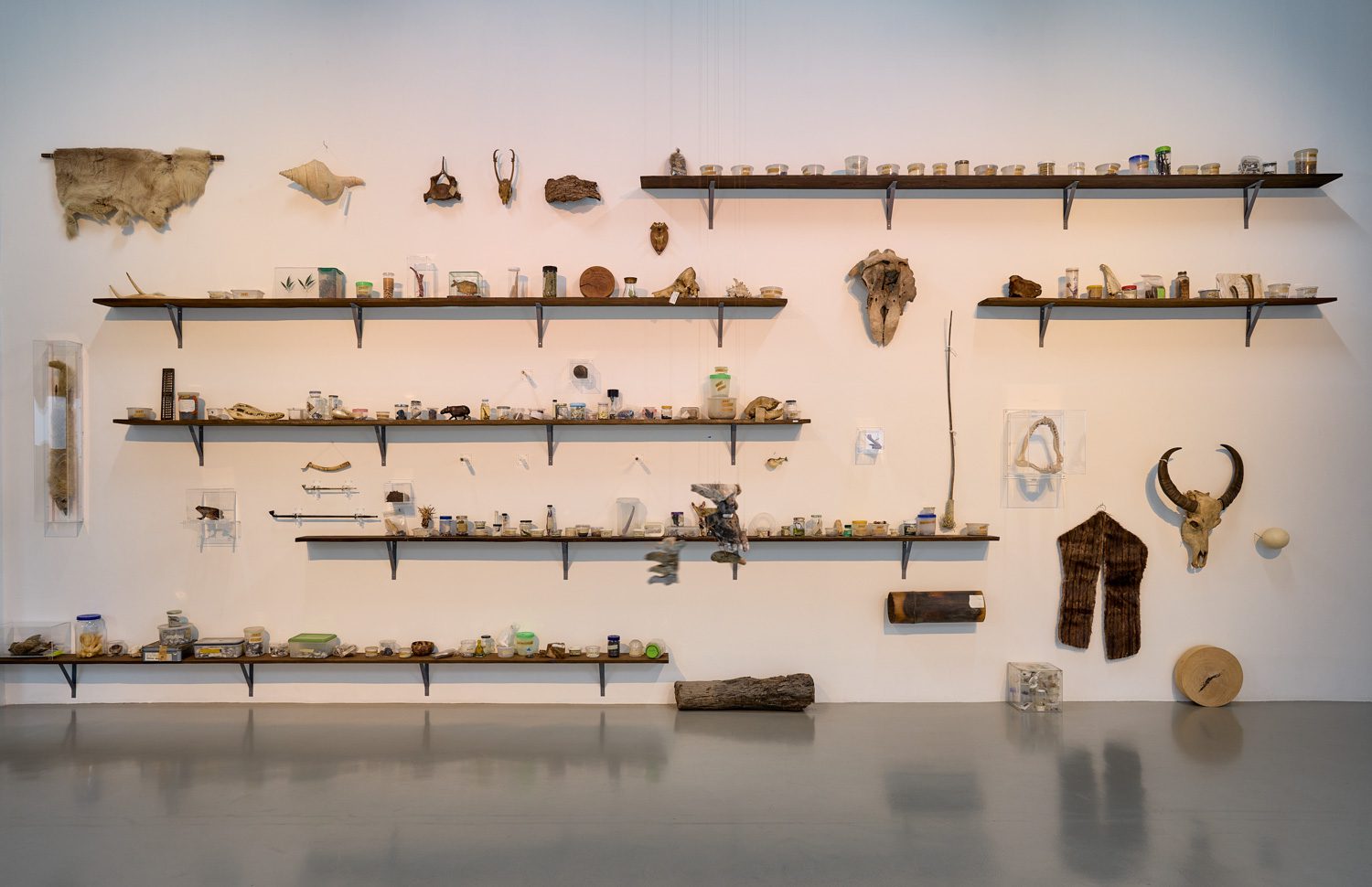

Ruengsak uses the collected specimens as the starting point to create the most complete simulation of a human. The artist burned these objects into ashes, then pressed them into cubes. The cubes were later carved into the shapes of human organs using the automatic computer operated CNC lathing machine, to create simulated organs with the most precise proportions. Opposite to ‘Species and Ashes Shelves’ is the work called ‘Research Reference and Finished Parts.’ The completed organ parts are waiting to be assembled in a performance carried out by three performers from different professional backgrounds. Reference documents are hung above the work with each piece of paper containing a story and myth of the magical merits of each of the creatures from different civilizations around the world. The data is the result of the artist’s own research, which is also used as the reference for his creation of the most perfect organs.
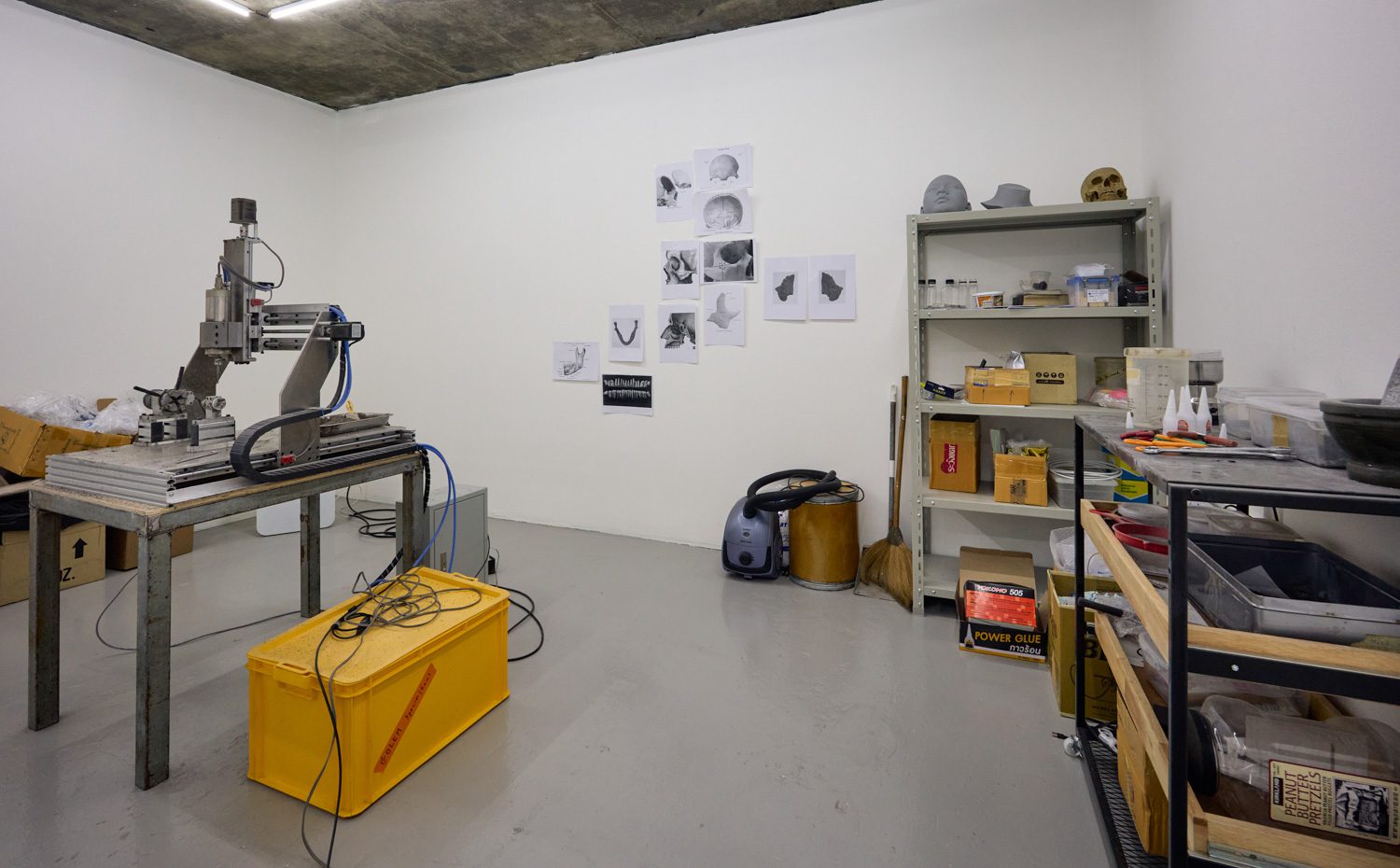


At the center of the room hung the skulls and bones, presented as a part of ‘GOLEM2022 – UNCANNY Assemble Station.’ The suspended pieces float above the double level stand, sandwiched by the tables used for the performance. The eyes of the simulated human are made of a tortoise shell, corresponding with a belief in Chinese culture where tortoise shells are used to predict the future. Located at the furthest end of the exhibition space is the workshop ‘CNC Production Station’ where the artist carved the parts.

The aforementioned components make the exhibition a space where art and science overlap. The art space is filled with traces of scientific experiments, medical operations and objects one can find in a museum of natural history. Meanwhile, performance art is incorporated as a way to help put the organs together, making the exhibition space somewhat a place where religious rituals are performed. This is where the artist and performers are given the status of sacred individuals with magical power, casting their spells to give GOLEM its life while the process where carcasses were burned into ashes and carved into objects resembles the process in which holy objects and amulets are made.
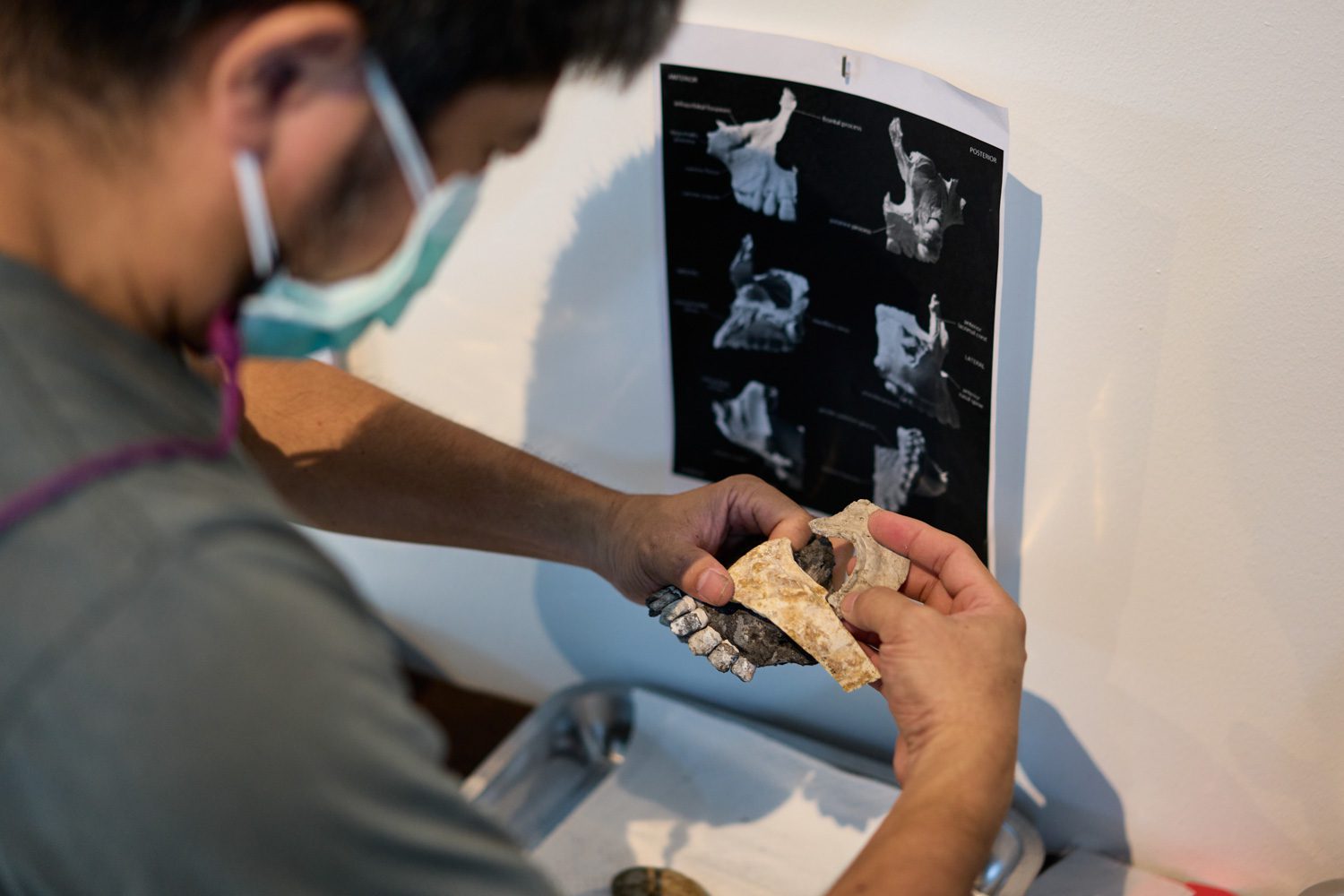

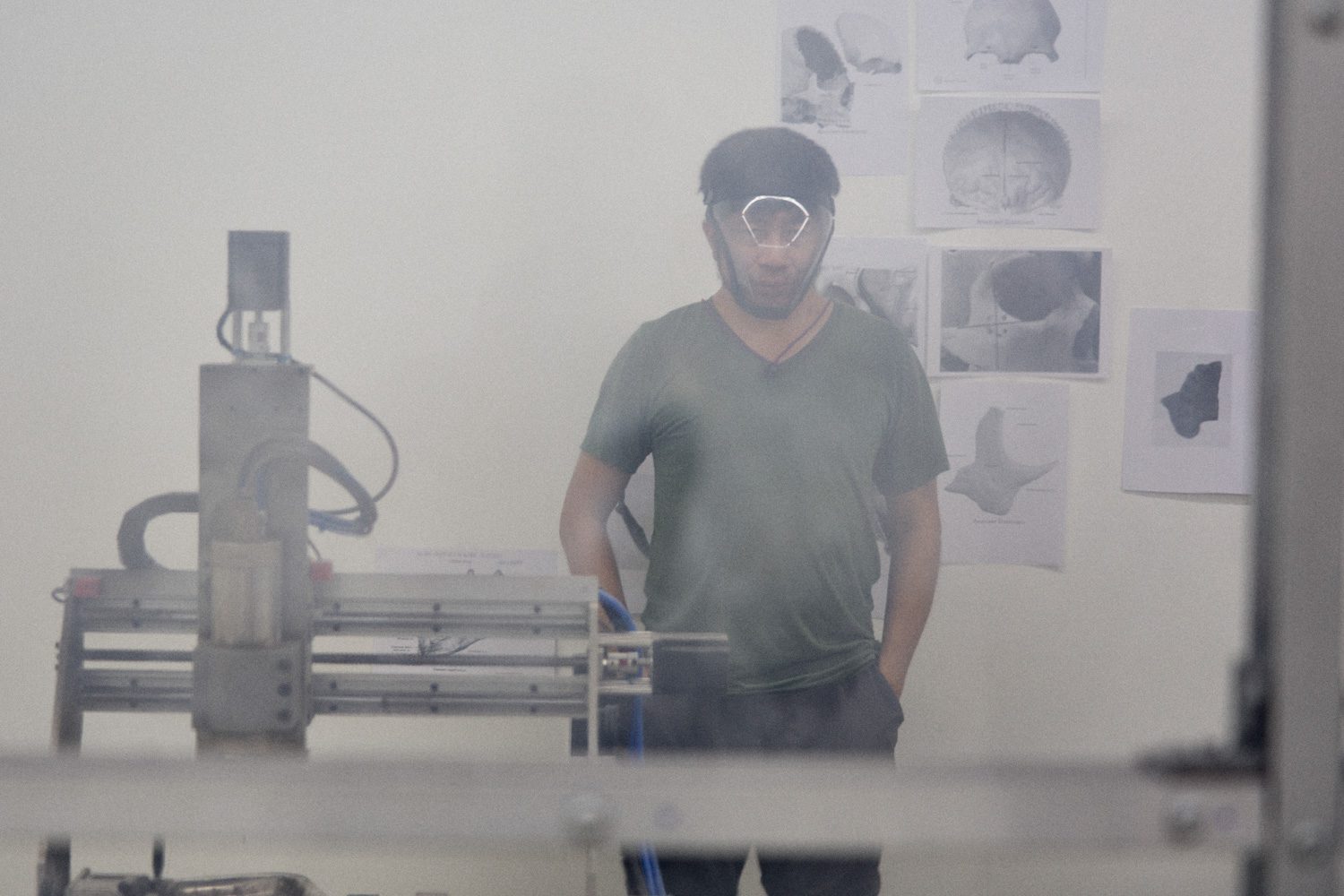
Ruangsak creates GOLEM as this non-human being with a human-like physical appearance. By dissecting flesh and bones, he navigated the internal organs in order to transform humans into GOLEM. The non-human bears resemblances to a real human from inside out, but it is not a human still for all the superior qualities it has over the species from which it is originated. He questions the substance of what it is to be a human and mankind being classified as type of mammal. In other words, humans sit almost at the top of the food chain and hold the power to tell stories and give meanings to things to the point where they can even create the perfect prototype of their own species. The artist provides a set of explanations about the good organs such as the good eyes, a good liver, a good brain, good teeth and good lips as well as different methods devised to bring the human species to that level of development. One can say that humans are the only species of mammals that can constantly evolve by making use of natural resources and other creatures coexisting in their surrounding environment. Ruangsak points out the price other living species have to pay for human beings to fulfill their own needs, lust, desires and self-obsession. He ends the exhibition by asking what the relationship between the human species and other living creatures should be like.

The GOLEM Ruangsak creates is charming and enigmatic for it is the perfect embodiment of mankind’s wisdom realized through tales, researched and found myths and legends. At the same time, it is grotesque and disgusting for it is a visualized and tangible presence of humans’ infinite desire for perfection and fear for imperfection, as well as our fragile, delicate existence.





